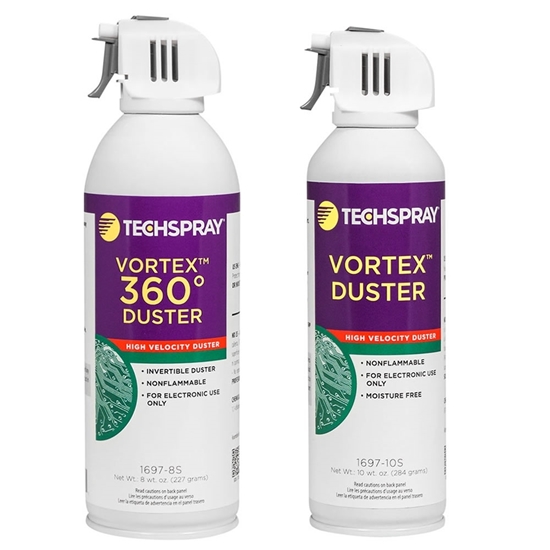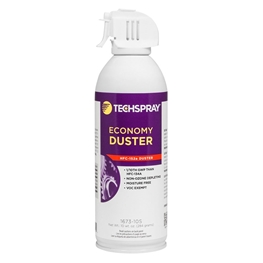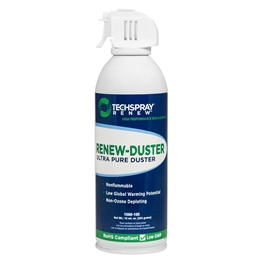
Vortex Duster
High-velocity nonflammable HFC-134a air duster
FAQ's
The can of duster must be held in an upright position when spraying. Do not tilt can more than 40 degrees during spraying operation or shake during use. Before use, press actuator to clear valve of any liquid product. Extension tube can be used to remove dust in tight areas. Use short bursts to prevent cooling of can.
This phenomenon occurs due to the expansion of the compressed refrigerant liquid as it dispenses through the aerosol valve and flashes to a gas. If the aerosol is operated for a long period, frost may form on the can because it is freezing the surrounding water vapor from the air. If it is collecting on the material to be cleaned, the operator is dispensing for too long of a period or is dispensing it too close to the material. The frost will evaporate and leave no residue. However, particulate matter blown onto a sensitive surface may cause damage due to the high pressure of the duster if dispensed too closely to that surface.
It may be different state-by-state, so contact your state environmental agency for regional specific regulations. For a general guideline, here is the process according to EPA hazardous waste regulations 40CFR. The can has to be brought to or approach atmospheric pressure to render the can empty. Puncturing is not required, only that it “approach atmospheric pressure”, i.e. empty the can contents until it’s no longer pressurized. This insures that as much contents as is reasonably possible are out of the can. It is then considered “RCRA-empty”. At that point it can be handled as any other waste metal container, generally as scrap metal under the recycling rules. Note that the can is still considered a solid waste at this point (not necessarily hazardous waste).







